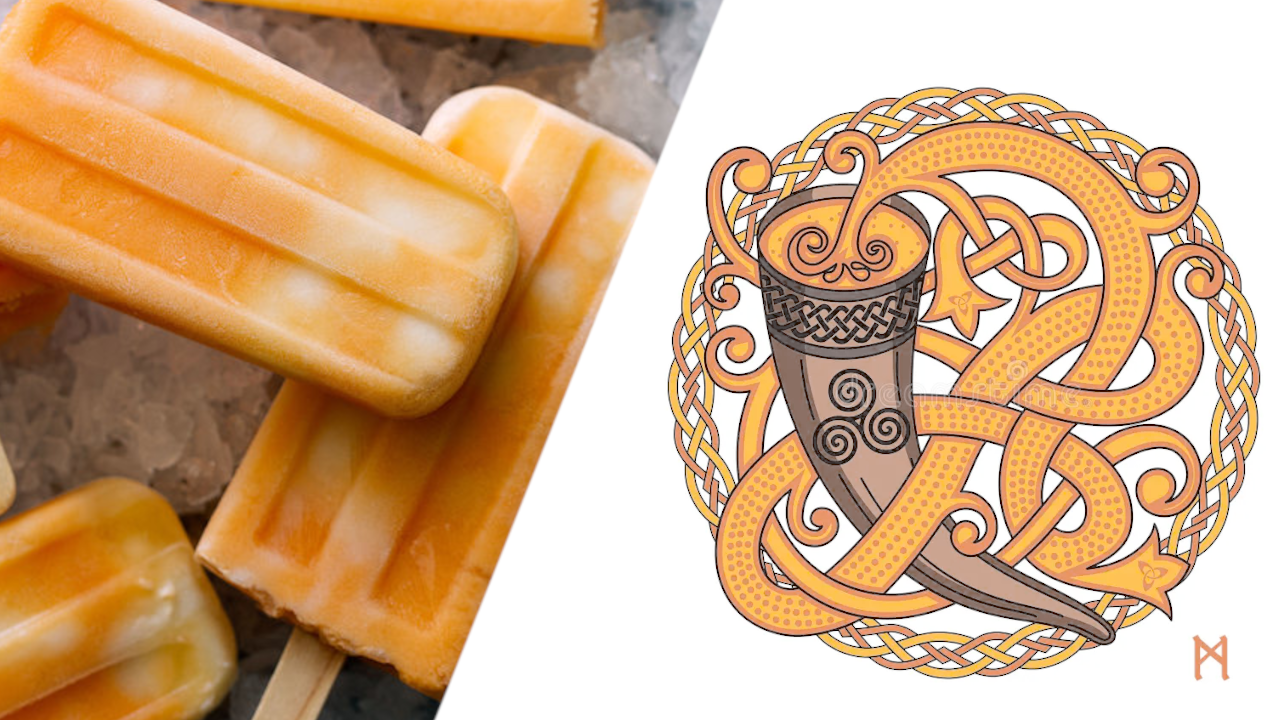Mead Batch #8: Orange Creamsicle

Heading says it all! My 7th batch (8th, actually – instead of 1 pom batch, I ended up with 2, so yeah…) After brainstorming with Amy, I decided I’ll do an Orange Creamsicle Mead! Oh hell to the fuck yes! I’ve been doing some research on this kinda recipe for a couple days now, and have settled on a recipe using ChatGPT’s assistance. I’ve ordered 16 Madagascar Bourbon Vanilla beans from Beanilla, some lactose from Northern Brewer, 15lbs Costco Wildflower honey (will only use 10, though), bought 5 gallons spring water as well as 8 Navel Oranges and a baggy of Tangerines. Here’s the recipe and process I will be using:
Orange Creamsicle Mead Recipe (5 Gallons)
Ingredients:
Honey: 10 lbs Kirkland Wildflower Honey
Water: 4.5 gallons (unheated, good-quality filtered or spring water recommended)
Lactose: 1 lb for secondary fermentation, with up to 0.25 lbs (4 oz) more for adjusting sweetness at bottling
Yeast Nutrient: 2 tsp total (added in stages)
Yeast Energizer: 1 tsp total (added in stages)
Yeast: 1 packet of Lalvin EC-1118
Vanilla Beans: 4-5 Madagascar vanilla beans (added on Day 3)
Orange Zest: Zest of 5-8 Navel oranges
Tangerine Zest & Juice: Zest of 3-5 tangerines (or mandarins) and juice of 4-5 tangerines
Instructions:
- Sanitize Equipment: Make sure all equipment is thoroughly cleaned and sanitized.
- Prepare the Must (No Heat):
- Pour 10 lbs of wildflower honey directly into the fermenter.
- Add 4.5 gallons of room-temperature water to the fermenter.
- Stir gently but thoroughly until the honey is fully dissolved into the water. This may take several minutes since the honey is unheated.
- Add the Orange and Tangerine Zest & Juice:
- Zest the Navel oranges and tangerines (avoid the white pith to prevent bitterness).
- Add all the zest and freshly squeezed tangerine juice directly to the fermenter. Stir to combine.
- Pitch the Yeast:
- Once the honey, water, and zest mixture is well combined, sprinkle the Lalvin EC-1118 yeast into the fermenter.
- Stir gently to incorporate the yeast, then seal with an airlock. Store in a dark place at a temperature of 65-75°F.
- Staggered Nutrient Additions:
- To support a steady fermentation with EC-1118, add nutrient and energizer as follows:
- Day 1: Add 1 tsp yeast nutrient and 0.5 tsp yeast energizer.
- Day 3: Add the remaining 1 tsp yeast nutrient and 0.5 tsp yeast energizer.
- Stir gently after each addition to distribute the nutrients evenly.
- To support a steady fermentation with EC-1118, add nutrient and energizer as follows:
- Add Vanilla Beans on Day 3:
- When fermentation has begun actively, prepare 4-5 vanilla beans:
- Split each bean lengthwise, scrape out the seeds, and add both the seeds and pods to the fermenter.
- Adding the beans at this stage helps preserve their delicate flavor and ensures good integration with the other ingredients.
- When fermentation has begun actively, prepare 4-5 vanilla beans:
- Secondary Fermentation (2-3 weeks later):
- When fermentation slows down, transfer the mead to secondary fermentation (optional) to help it clear.
- Add 1 lb of lactose for creaminess. Dissolve the lactose in a small amount of warm water to help it mix smoothly before adding it to the mead.
- Final Tasting and Bottling:
- After 1-2 months in secondary, taste the mead to see if the creaminess and sweetness are to your liking.
- If you want to increase the creamy sweetness, dissolve up to 0.25 lbs (4 oz) more lactose in warm water and stir into the mead just before bottling.
Some Updates
Slowly but surely, I’m getting better with the left leg. I’ve been doing a lot of yard work – burned up two huge logs, as well as about half of a huge stump in yard, shoveled a buncha dirt and sorted rocks out of that, moved the dirt over to an area where I wanna raise more dirt hillside to act as a barrier for a future patio, hauling the rocks I sorted out to the outside side of fence by the road where there’s some small gaps between ground and fencing to block any possible cat/pest intrusion as well as any possible digging escapades by Marley or Capt’n.
The front building – I’ve constructed a nice sized workbench with “sliding tote drawers” to store tools and supplies. This weekend, I’ll be driving to Redding to purchase a china cabinet for the kitchen, then I can haul the metal shelving I’ve been using out of there and into the front building, to store paints, chemicals and gardening supplies on (or maybe the shed… IDK yet, will figure this out when the time comes). The kitchen’s finally gonna look like a real kitchen! Oh yeah, I bought an used full size fridge a few weeks ago, so I will be moving the small red fridge I’ve been using into the DogHouse eventually. So that’s a big thing! All that remains for kitchen upgrades are: flipping the bathroom door so it opens into the kitchen not into the bathroom, a range hood over the stove, paint the walls, and install some kinda flooring – prolly tile. Concrete is nice but boring after a while!
I’m no prepper, but it doesn’t hurt to be prepared… especially after that winter from hell 2 winters ago!!! I have a solar power bank (small) that can power one tv, starlink, apple tv and two lights for about 24 hours without sun; a dual-fuel generator, got 5 gallons of gas plus a big tank of propane ready; Mr Buddy propane heater (with another big but empty tank of propane); kerosene heater (need to order kerosene for this winter); a little bit over 5 months of MREs for 1 person eating 2 meals/day plus 57 servings of dried fruits/veggies arriving soon; about a month’s worth of canned food, 2-3 weeks’ worth of frozen meat and fish (got more canned food arriving soon, as well as hitting up Costco for meat/fish this weekend).
Yup… I’m almost well-prepared!!!

